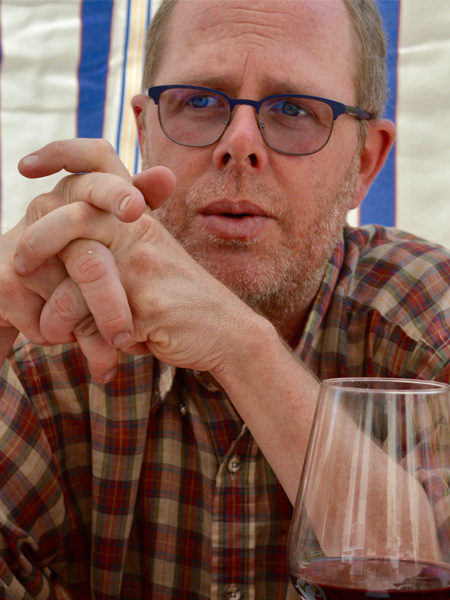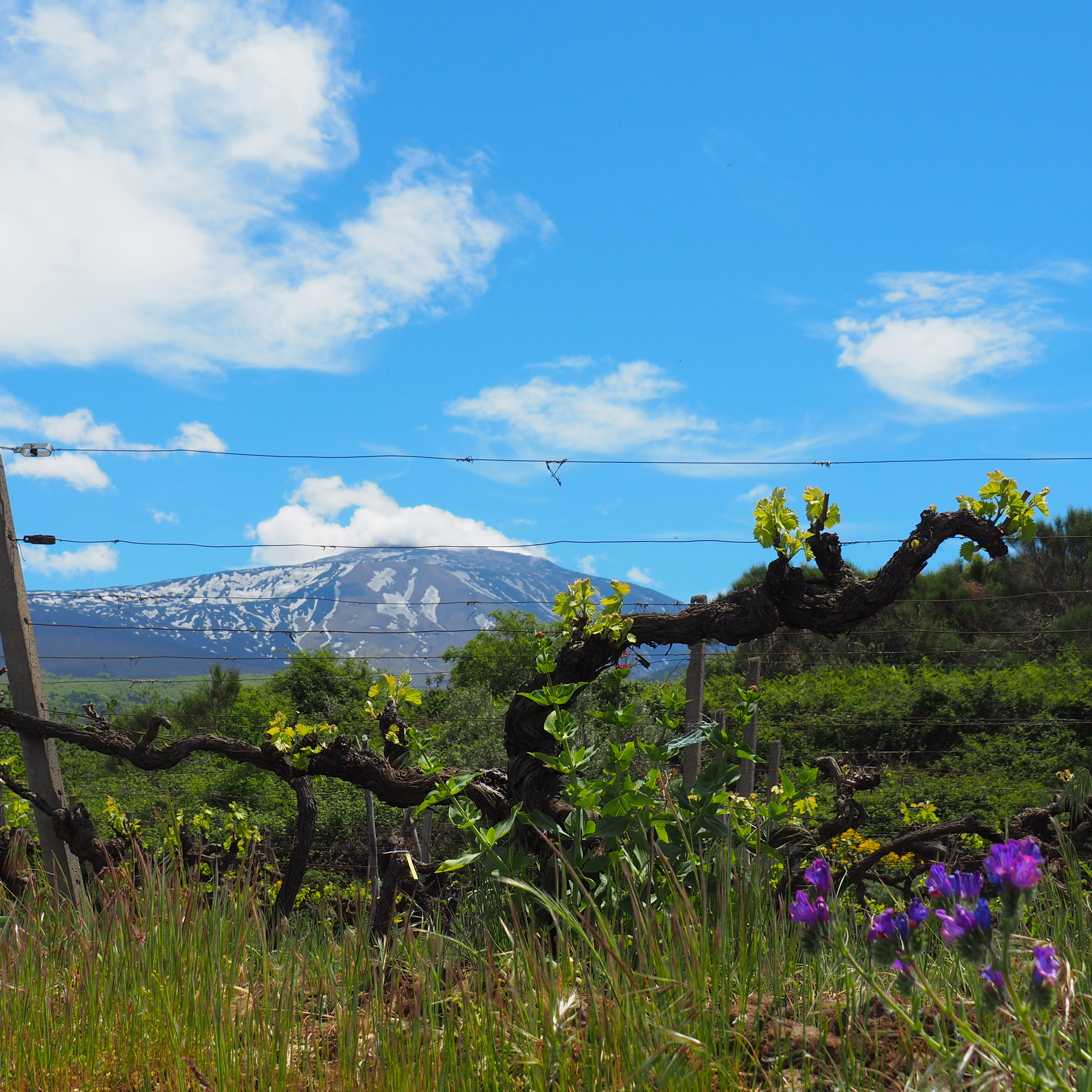

Benjamin North Spencer made wine in California for a decade before moving to Sicily in 2012, where he founded the Etna Wine School. He has just released a new book on the wines of Mount Etna, a region producing some of Sicily’s—and Italy’s— most sought-after wines. Stephanie Johnson recently spoke with Spencer about the place that has become his home. The interview has been edited for length and clarity.
Why Etna?
I came here in 2007 with my wife (we met in California; she’s from here) and on my first afternoon in Sicily, I just fell in love with it. I discovered these wines from the volcano with no variety or origin, but this savoriness and this really beautiful quality about them that was stunning to me. The whole experience of sitting between the sea and the volcano, drinking a wine that blew my top off, was life-altering.
In all of my studies and experiences with wine, Etna is the only place in the world that keeps me interested. We’re literally positioned between water and fire. How many places in the world create fine wine from the edge of the world? As short as the modern history is, everyone is still learning on the job, so very few producers have an absolute set mentality. There’s still a lot of room for discovery and learning, and for me, that’s what wine is.
Radical Geology
Etna is this volcanic cone that stands 10,600 feet high on the eastern coast of Sicily. The coastline is subtropical, but farther into the center of the volcano it becomes an alpine situation. Lava flows, from different times, cross through the DOC. Within this volcanic cone, formed over 220,000 years, we have countless changes in elevation, aspect, exposure to sea and winds. The age of the volcanic lava flow, the depth of the topsoil, and the slope are all crucial [to the styles of the wines].
On the north slope, where you have more deflected sunlight in spring and fall and moredirect light in the summer, you end up with different types of elegance, intensity and complexity in the wines. This quadrant saw a huge boom in the early 2000s, and even now there are producers who are investing millions of euros in land and vineyards there.
On the eastern slope, Milo is where you see a lot of these lava tongues coming down toward the sea. It’s the area for Etna’s only Superiore category—Etna Bianco Superiore, a minimum of 80 percent carricante, a very salty, briny white wine. The eastern slope is typically more rainy, the sands a little bit cooler, the allophane [weathered volcanic ash] a little more prominent, and it tends to give full-bodied red wines with soft, supple flavors. They have a rounder, more lush profile as compared to red wines on the north slope.
Allophane?
Allophane is Etna’s secret weapon. It’s the primordial volcanic clay, typically formed as a result of silica and iron breaking down. It often forms about one meter below the surface. Allophane is crystalline and amorphous, but it has enough of a structure to hold water and trap nutrients like nitrogen, potassium and phosphorus. As the vine tips go through soil, they tap into this layer of allophane and it gives them water and nutrients when the vines need it, without oversaturating the root tips.
The Southern Slope
South of Milo are about 35 extinct volcanic craters, and 319 lateral or parasitic cones—where magma escaped in a seismic event and a pyroclastic explosion and then closed in on itself, leaving a huge pile of sand, rock and metal. The slopes of these small parasitic cones can have sand on one side, rock on the other, and different exposures to the sun and the wind, with valley floors in between filled with gravitational erosions and inorganic material. There’s a lot of biodiversity and a lot more field blends in this quadrant of the DOC—a lot of old vineyards planted on their own roots, with different relic varieties mixed in with the standard varieties. You get very elegant wines with goodcomplexity and intensity of flavor.
Roots and Grafts
Here on Etna, particularly with nerello mascalese, the vine is transmitting the fertility and age of the soil. When you put an intermediary between nerello and the earth (meaning an American rootstock created in a nursery), you change the yields, what the plant feeds on, the amount of water and nutrients it brings up. Vines that are in direct communication with the mountain are able to say something about Etna that vines with rootstocks simply cannot. Wines from vines that have been grafted with American rootstock are often more playful in the aromas, brighter, more ethereal, very high-toned with almost candied fruit, but also there’s a thinness that you don’t see in own-rooted vines, which have darker, more brooding flavor and aroma profiles, with more salty and tertiary flavors.
Modernist, Minimalist, Naturalist
Etna has a very short history with regard to the DOC, created in 1968, but a large number of producers that have flocked to the mountain since the late 1990s. You have modernists looking at temperature control and anaerobic control to keep fresh flavors, and you also have the naturalist and minimalist movements occurring at the same time. There is something to be said about the naturally rustic quality of Etna wines; the varieties have all grown up in a very harsh environment, and they have found a fineness in these last 20 or 30 years with experimentations in temperature control, stainless steel and some neutral wood aging. These two roads are converging in a lot of ways, and the best wines will win out in the end. [Wine drinkers] have an opportunity to help define Etna, because it’s evolving in real time, and they can communicate instantaneously with producers via social media. They can make their feelings known, and producers are still flexible enough that 10 or 20 comments can shift a practice the following year or encourage them to keep going in a certain direction. It’s a fantastic time to be here on Etna and for people to discover it together, at the same time as the producers are discovering it.
is the Italian wine editor at Wine & Spirits magazine.
This story appears in the print issue
of October 2020.
Like what you read? Subscribe
today.

















